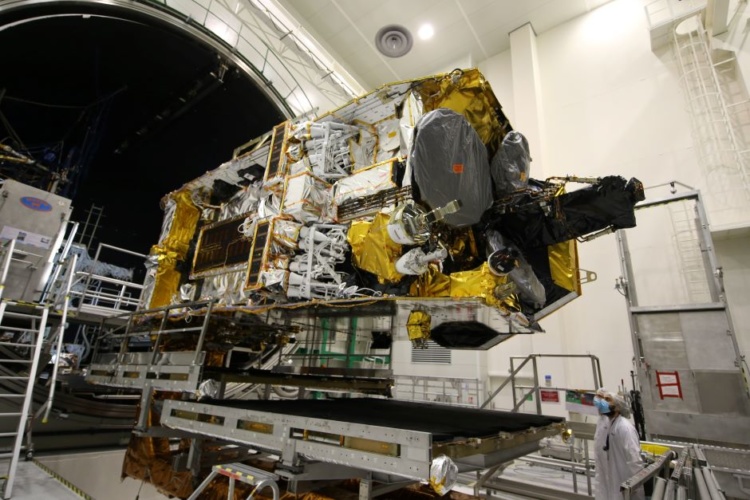What is your role at Inmarsat and what does it entail?
I am a Spacecraft Analyst in Inmarsat’s Satellite Operations Division – which focuses on the development of large, geostationary satellites. As a Spacecraft Analyst, I am responsible for the satellite operations engineering work stream for the Inmarsat-6 satellites – Inmarsat’s most complex spacecraft to date.
As part of the division, our work is dedicated to the operation of the Inmarsat-6 fleet – with the first of Inmarsat’s I-6 satellites due to launch later this year. Currently, my team and I are working to prepare every element of our operations to get the two I-6 satellites ready for the day we take control.
Can you tell us what drew you to engineering in the first place?
I grew up fascinated by engineering and always admired my dad’s ability to fix almost anything. This led me to study Aerospace Engineering at university – the decision between materials and space engineering was to me a no-brainer. After university, I decided to accelerate my studies, gaining my MSc in Space Engineering before joining Inmarsat’s graduate scheme to start my career.
The graduate scheme was a truly invaluable experience. During the two-year programme, I spent several months rotating through the business, from working as a programmer to spending six months working in the product teams, learning about the value that the company’s spacecraft bring to its customers. My final placement was in satellite operations, and I absolutely loved it, so when the opportunity arose to join the team permanently, I jumped at the chance.
Who has inspired you during your career in the aerospace industry?
While my dad played a major part in facilitating my interest in engineering, and giving me that initial interest in the industry, I am continuously inspired by the role models I work with on a daily basis.
Having the opportunity to be working with such influential, inspiring people – both male and female – continues to foster my interest and excitement in engineering. For me, it is important to surround yourself with positive people, who both encourage and challenge you.
What do you see as the barriers stopping girls from pursuing careers in STEM or engineering? And what can businesses do to remove these barriers?
Despite numerous campaigning initiatives, engineering remains a male dominated field. Only 24 per cent of women make up the UK STEM workforce, and in aerospace specifically, only nine per cent of roles are held by women.

From young ages, girls are unconsciously told that engineering is considered a “male role” – from the characters we see in movies to the toys we are given for Christmas. Female visibility is key to encouraging more women into the industry. In fact, a study by Microsoft, of 11,500 girls and women across 12 countries, discovered that girls are much more likely to consider a STEM career if they have a visible role model. By welcoming more females into leading roles in the industry, young girls and women will be able to see themselves in the same position – doing amazing work.
Businesses can play a significant role in dismantling stereotypes and resetting the barriers to entry. One way to do so is by collaborating with schools and universities to create programmes and activities that introduce young girls to STEM career options. At Inmarsat, for example, we have our ‘Passport Programme’, a learning portal for students aged 14-17, offering career advice and information on satellite communications.
What advice would you say to women considering a career in STEM or engineering?
I grew up with a love for spacecraft and pursued the dream of working in the space sector for many years. I want more women and girls to do the same. The number of opportunities is growing all the time and they are open to everyone who works hard in their education and then carries that on into their work life.
Build a network as you go along, within academia then in your company and, finally, more broadly with contacts outside your employer. Offer help and advice to others and seek it from this network too and together even more success and opportunities will develop.
My advice for any women considering a career in STEM would be to push the boundaries of the industry. We’re starting to see more women in senior roles and technical roles, and if you want to be one of these women, you can be. Seek those opportunities, and once you’ve found them, go and grab them with both hands. That’s a positive example that others will see and want to emulate and want to hire, growing both the supply and the demand for more of us in the future.










Water Sector Talent Exodus Could Cripple The Sector
Well let´s do a little experiment. My last (10.4.25) half-yearly water/waste water bill from Severn Trent was £98.29. How much does not-for-profit Dŵr...